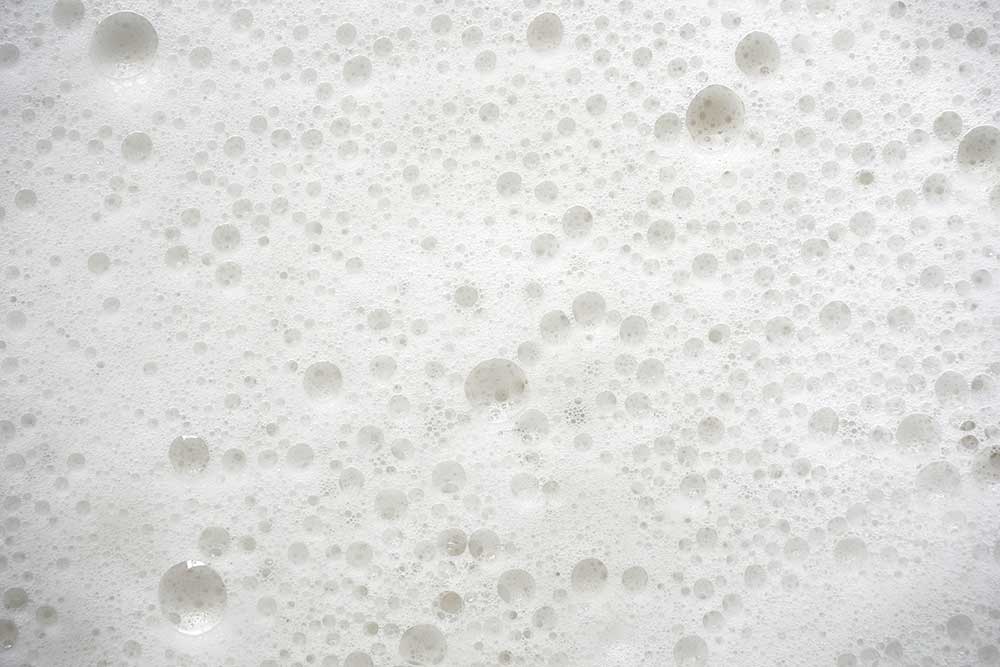Selecting the Right Defoamer for Your Certain Application Demands
Selecting the proper defoamer for specific application requirements is a nuanced procedure that demands mindful consideration of multiple elements, such as the foam tool, type, and operating conditions. Comprehending the subtleties of defoamer efficiency-- consisting of speed and determination-- while additionally accounting for governing and ecological variables is vital.
Comprehending Foam Formation
Foam development happens when gas is caught within a fluid, creating a secure structure of bubbles. This phenomenon can substantially influence various commercial processes, especially in sectors such as food production, pharmaceuticals, and wastewater treatment. The presence of foam can prevent mixing, reduce product top quality, and also cause operational inefficiencies.
Foam generally develops because of a combination of variables, consisting of surface-active representatives, frustration, and the attributes of the liquid phase. Surfactants lower the surface area stress of the fluid, promoting the development of bubbles that can coalesce and stabilize. Frustration, whether from mechanical mixing or gas introduction, boosts bubble development, resulting in increased foam quantity.
Comprehending the technicians of foam development is critical for sectors intending to enhance their processes. By identifying the details problems that advertise foam generation, organizations can implement techniques to reduce its effects. This expertise prepares for selecting ideal defoaming agents that effectively target the special difficulties presented by foam in different applications. Consequently, an extensive understanding of foam formation is essential for boosting effectiveness and maintaining item stability across different markets.
Kinds Of Defoamers Available
Different kinds of defoamers are offered to address the difficulties postured by foam in industrial applications. defoamers. Broadly categorized, defoamers come under three groups: silicone-based, non-silicone-based, and natural defoamers
Silicone-based defoamers are renowned for their efficiency and security across a large range of temperatures and pH degrees. They are usually made use of in applications where strong foam suppression is essential, such as in adhesives, finishes, and paints. Their low surface stress permits for quick foam collapse.
Non-silicone-based defoamers, often made from organic compounds, provide an option for applications delicate to silicone deposits. These defoamers can be additional split right into polyether and ester types, each tailored to satisfy certain formula needs. Non-silicone defoamers are regularly made use of in food handling and personal care products due to their compatibility with numerous solutions.
All-natural defoamers, originated from plant or pet resources, are getting grip because of their green account. These items are especially appealing in applications where regulative compliance and sustainability are critical, such as in agrochemicals and biotechnology.
Choosing the right sort of defoamer is crucial for optimizing efficiency and making sure compatibility with certain applications.
Secret Application Considerations
When picking a defoamer, it is crucial to take into consideration the certain application demands to guarantee optimal efficiency. defoamers. Different industries have distinctive requirements, such as food processing, drugs, or wastewater treatment, and each application may call for distinct defoaming buildings
Secret aspects to examine include the tool in which the defoamer will be made use of, whether it is water-based, oil-based, or a combination thereof. The temperature and pH degrees of the application can also greatly affect the effectiveness of a defoamer. In addition, compatibility with other chemicals existing in the system is vital to protect against negative reactions that can compromise efficiency.
Another crucial consideration is the frothing behavior of the certain system. Understanding whether the foam develops quickly or slowly can lead the selection of a defoamer that targets Full Report the source efficiently. The desired rate of defoaming can affect the choice, as some applications need quick action while others may tolerate slower defoaming procedures.
Last but not least, governing and environmental considerations need to not be overlooked, especially in sectors with strict compliance demands. Picking a defoamer that aligns with these factors guarantees both effectiveness and security in the application.

Performance Testing Methods
Reviewing the efficiency of a defoamer needs a methodical method to testing that properly gauges its efficiency in particular applications. Various efficiency screening methods can be employed to establish the ideal defoamer for a given solution.
One typical method is the bubble examination, which evaluates pop over to this web-site the defoamer's capacity to lower foam volume over time. This examination involves producing a stable foam and then including the defoamer to observe the rate of foam collapse.

Eventually, picking the ideal efficiency screening method depends upon the specific application and the sort of foam being addressed. Each method provides useful information that can assist formula changes and boost the performance of the defoamer in sensible Visit This Link applications.
Ideal Practices for Choice

Next, take into consideration the defoamer's efficiency in terms of speed of action and perseverance. A quick-acting defoamer might be needed for processes where quick foam suppression is critical, while a more consistent solution may be needed for prolonged foam control. In addition, evaluate the ecological effect of the defoamer, including its biodegradability and any kind of regulatory compliance needs.
Conduct trials with chosen defoamers to establish their efficiency in real-world problems. This step is essential to verify that the selected item fulfills efficiency expectations. Consult with makers or suppliers for technical assistance and assistance, as they can give valuable insights right into product formulations and application techniques. By adhering to these ideal practices, you can enhance foam control efficiency and make certain the long life of your procedures.
Conclusion
In recap, picking the proper defoamer demands a detailed examination of various elements, including foam type, tool, operating conditions, and ecological factors to consider. Understanding the distinct attributes of foam formation and the available defoamer alternatives is critical. Additionally, utilizing effective efficiency testing techniques and adhering to best practices throughout the choice procedure will improve the chance of achieving ideal defoaming outcomes. Ultimately, a knowledgeable choice method will attend to certain application requirements and alleviate frothing challenges successfully.
Choosing the appropriate defoamer for details application demands is a nuanced procedure that requires cautious consideration of multiple elements, such as the foam tool, operating, and type problems.Picking the ideal defoamer is important for attaining ideal efficiency in foam control applications. A quick-acting defoamer might be needed for procedures where fast foam suppression is crucial, while an extra relentless solution could be needed for long term foam control.In summary, choosing the proper defoamer demands an extensive assessment of various aspects, consisting of foam type, tool, operating conditions, and environmental considerations. Understanding the unique characteristics of foam development and the offered defoamer options is crucial.
Comments on “How Defoamers Improve Product Quality and Reduce Waste in Production”